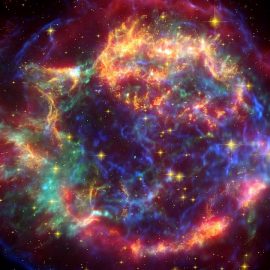

This article is an excerpt from the Shortform summary of "The Hero with a Thousand Faces" by Joseph Campbell. Shortform has the world's best summaries of books you should be reading.
Like this article? Sign up for a free trial here .
What are some good hero’s journey examples? What can these examples of the hero’s journey demonstrate about the hero’s journey?
Joseph Campbell’s The Hero With a Thousand Faces is an exploration of the power of myth and storytelling, from the ancient world to modern times, and spanning every human culture across the world. We’ll cover hero’s journey examples for the departure stage of the journey and explore how the themes of myth remain consistent across the globe.
Hero’s Journey Examples
All peoples, and indeed, all individuals, make sense of the world they live in and grapple with the experience of living by telling stories. Myths are the foundation of all human physical and intellectual pursuits, be they religious, economic, social, or cultural, because these myths tell us who we are and what destinies we are here to fulfill. Let’s look at some hero’s journey examples for the departure stage.
Hero’s Journey Example, Departure Stage #1: The Call to Adventure
In the first part of the monomyth, we meet our hero, our “man of destiny,” and witness their call to adventure. The call to adventure can come about through chance, even a mistake or blunder, which introduces the hero to a hidden world of possibility, guided by mysterious forces which the hero will come to understand through the course of their journey.
A frequent device employed in mythology is that of the herald or conjurer, the (often unlikely) figure who reveals the hero’s destiny and spurs them to action. The herald represents our subconscious, wherein all of our darkest fears are hidden. They are forcing us to confront things that we do not want to. As such, the herald is frequently a grotesque or unpleasant-looking figure, like a frog or a beast, or otherwise some veiled, mysterious, or unknown figure.
King Arthur and the Hart
In the hero’s journey example of Arthurian legend, King Arthur encounters a great hart (an archaic Old English term for a deer) in the forest. He gives chase to the animal, vigorously riding his horse until it dies from exhaustion. Arthur then comes to a fountain, where he sets down his dead horse and becomes lost in deep thought.
While he’s sitting at the forest fountain, he hears what sounds like dozens of hounds coming toward him. But, it is not hounds—instead, it is some strange beast, the likes of which the King had never seen before. The noise of 30 hounds barking and snarling emanate from its stomach, although there is no noise while the beast drinks at the fountain. Arthur marvels at this sight: this is his herald, his signal to begin his quest.
Hero’s Journey Example, Departure Stage #2: Refusal of the Call
A common feature of the monomyth is the hero’s refusal of the call, an initial reluctance to follow the steps of their destiny. In folk tales and myths across the world and throughout history, this refusal amounts to a selfish impulse to give up one’s narrow, immediate interests in the pursuit of spiritual awakening or even the salvation of the universe. In psychoanalytic terms, the refusal represents the clinging to infantile needs for security. Thus, the mother and father are the figures preventing true growth and transformation as the ego fails to develop and embrace the world outside the nursery.
Prince Kamar al-Zaman and Princess Budur
This concept is well illustrated in the hero’s journey example of the Arabian Nights tale of Prince Kamar al-Zaman and Princess Budur. In it, the prince has rejected his father’s demands that he take a wife, citing his desire to commit his life to Allah and avoid the pleasures (and sins) of the flesh.
The sultan is advised to broach the subject with his son in the presence of a great council of state, the rationale being that the prince will surely be goaded into accepting marriage under these conditions of immense social pressure. But Kamar al-Zaman again refuses his father and insults him in front of his great ministers and viziers. Enraged, Kamar al-Zaman’s father has him imprisoned in a decrepit tower, where he is to reflect upon the injury and shame he has brought upon his family.
Simultaneously, in distant China, Princess Budur—the beautiful daughter of the emperor—is similarly refusing marriage to all suitors her father presents to her. She even threatens to kill herself with a sword if he brings up the subject of matrimony again. Like the sultan, the emperor locks his daughter up and appoints ten old women to guard her. He then sends messengers to all the kingdoms of Asia, telling the rulers that Princess Budur has gone mad.
Both the hero and the heroine have taken the negative path and refused the call of destiny. They are a predestined match, but it will take a miracle to bring them together.
Hero’s Journey Example, Departure Stage #3: Supernatural Aid
Some heroes respond to the call immediately. They are then guided along the path of adventure by a supernatural helper, as part of their first steps along the hero-journey. This helper is the personification of destiny. Often, this figure takes the form of an old man or old woman, like the fairy godmother, wizard, shepherd, smith, or woodsman figures of European fairy tales. But it can also take on other forms, like that of the Virgin Mary in many Christian saints legends from the Middle Ages. In the ancient mythology of Egypt and Greece, this figure was the boatman or ferryman, the conductor of souls to the afterworld—Thoth in Egyptian lore and Hermes-Mercury in Greek legend.
Maymunah
We see the supernatural aid theme as we return to the story of Kamar al-Zaman and Budur, another hero’s journey example. A shape-shifting figure named Maymunah crawls out of an old well in the tower where Kamar al-Zaman has been locked up by the sultan (the well symbolizes the unconscious and Maymunah the flowing up of unconscious thoughts into the realm of the conscious).
Finding the prince sleeping, she is awed by his physical beauty. Flying away, Maymunah encounters another supernatural being called Dahnash, who declares that he has just returned from China, where he has laid eyes on the most beautiful woman in the world—none other than Princess Budur. The two spirits argue about which royal youth is fairer. Each of them brings the other to their preferred candidate’s resting-place, but they cannot decide who is more beautiful unless they see them lying side-by-side.
Thus, these two otherworldly helpers begin the process of uniting the two fated youths, without either the prince or princess exerting any conscious will. The helpers are moving the hand of destiny.
Hero’s Journey Example, Departure Stage #4: Crossing the Threshold
With this aid and guidance in hand, the hero sets off on their adventure until they come to a point where they are further away from the world of comfort and familiarity than they have ever been before. Ahead of them lies the danger of the unknown. On an individual level, this aspect of the heroic monomyth parallels the dangers and uncertainties of growing out of childhood and away from the protection of one’s parents.
It is at this point that the hero meets the guardian of the threshold, who stands between the worlds of the known and the unknown. This guardian is often a fearsome and monstrous figure, who represents our fears of leaving our comfort zone and stepping out into the world beyond. The hero must overcome this obstacle, just as we all must overcome our fears of the unknown if we are to thrive and grow as human beings in the great adventure of life. Only those with competence and courage can overcome the danger.
The Greek god Pan is perhaps the best-known of this type of border guard in hero’s journey examples. He instilled a wild, irrational fear into those who dared to cross into his realm (this is where the word “panic” comes from). To some, Pan would frighten his victims to death. But to those who paid him proper respect and homage, Pan would bestow bounty and wisdom.
Hero’s Journey Example, Departure Stage #5: Belly of the Whale
Next comes one of the most potent symbols of the hero’s death and rebirth—the common motif of the hero being inside the belly of the whale. This belly symbolizes the womb (also a temple); the darkness within represents death; and the hero’s emergence parallels the act of birth (or rebirth).
The Greek hero Heracles sees the city of Troy being sacked by a monster that had been sent by the angry god of the sea, Poseidon. The king ties his daughter to the sea rocks as a sacrificial offering, hoping to appease the angry deity. Heracles agrees to rescue the girl and dives into the monster’s gaping mouth. He is digested, and manages to kill the beast by hacking his way out and emerging from the belly.
Other swallowing-and-reemerging motifs occur in mythological traditions across the world. The Irish hero Finn MacCool is swallowed by a monster known as a peist; in the German fairy tale of Red Ridinghood, the heroine is devoured by a wolf; on the other side of the world, in Polynesia, Maui is consumed by his great-great-grandmother.
———End of Preview———

Like what you just read? Read the rest of the world's best summary of "The Hero with a Thousand Faces" at Shortform . Learn the book's critical concepts in 20 minutes or less .
Here's what you'll find in our full The Hero with a Thousand Faces summary :
- How the Hero's Journey reappears hundreds of times in different cultures and ages
- How we attach our psychology to heroes, and how they help embolden us in our lives
- Why stories and mythology are so important, even in today's world






